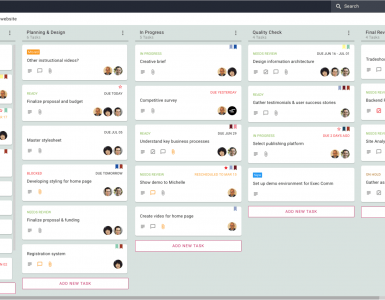The impending economic downturn brought about by the Coronavirus pandemic has had a dual effect on freelancers.
On one hand, corporates who had traditionally relied on in-house talent are now scouting for freelance providers to keep costs low. At the same time, the traditional watering holes for freelancers are now witnessing lesser than usual activity due to lower economic activity overall.
This has forced freelancers to get creative in order to be more attractive to their prospective clients.
The Freelancer Dilemma
As a freelancer, your rates are directly proportional to the reputation and experience you have built in your industry.
But here’s the thing – freelancing is a service-based offering, and as it is with any other service business, you are only paid for the hours you put in. In other words, you don’t get paid on days you don’t work.
For this reason, productizing your business can be very effective. In this article, we are going to discuss productization in detail, and how you could launch a successful freelancing career with this strategy.
Defining Productization
As you could infer from the term itself, productizing is nothing but making your service more “product-like”.
Let’s take the example of a freelancer offering web designing services. In a typical setup, this freelancer charges clients either by the hour or based on the project. Either way, the money that this freelancer makes is driven by the size of the project.
In a productized setup, this freelancer no longer customizes his pricing based on the project requirements. Instead, they offer a “product” which is a set of different deliverables for a fixed fee.
For instance, for $299, this freelancer could build you a three-page website design along with a logo, favicon, and HTML templates.
Now, this offering is not for everyone. However, this could be appealing to a niche subset of customers who are looking for a very predictable set of deliverables that fulfils their needs. Also, this may work out to be cheaper than having custom design requirements.
From the freelancers’ perspective, this is more efficient since they can now use a common template to design all these various client requests. These savings can be passed on to the consumer in the form of a more affordable package.
What I have described above is perhaps the most popular way to productize a service business. However, that’s hardly the only way to do it.
Another way to productize a business is to rework the back-end plumbing to make it more efficient while keeping your offering largely the same. Here, the objective is to make your own processes more efficient while retaining your service offering.
For example, if you are a freelancer sales consultant, you may build or invest in a tool that automates a large part of your project – as a result, you no longer have to manually work on all your tasks – the tool takes care of a large part of your work.
This way, you are able to take on more projects and improve your revenues.
Identifying Your Niche
The first step in productizing your freelancing business is identifying your niche. If you are an established freelancer with dozens of projects under your belt, you could start by analyzing your past projects.
- What specific services did you offer your clients?
- Is there a pattern in the kind of clients you worked with, their project requirements, your deliverables, or the work process?
- Can you identify the least common denominator among all your projects – a feature or deliverable that all or most of your projects need?
Once you have answers to these questions, you can find a productization strategy for your business.
Going back to the example of a web designer, the freelancer might notice that most of his clients are small businesses who inevitably want a simple website along with logos for their business.
So in this case, this could be the service niche they want to target.
Map Your Workflow
Once you have identified the niche, the next step is to build an elaborate workflow of the process. There is plenty of workflow management software available in the market that you could use for this purpose.
The objective here is to build a checklist of every aspect of your job. When this is done, you could identify the tasks that are either packaged into one offering or be automated.
A quick point to note here – establishing a workflow of the process is as much about elimination as it is about productizing. If there is a task that is completely different or needs different skills than the rest of the tasks, then it is a good idea to exclude it.
You may also find opportunities to build two or more products. Do not restrict yourself to any specific format. Every freelancer has their own unique skills and offerings. So build as many products as possible while ensuring that each product meets one or two specific objectives.
Productizing Strategy
Once you have figured out what to productize, the next step is to build a productizing strategy. \
Earlier in this article, I talked about the two different ways to productize – packing your current offering, or automating the internal plumbings.
Packaging your offering into a product is relatively easier. It only requires a change in your communication and the kind of clients you reach.
For example, instead of seeking client requirements and then offering a price, you sell your package and quote the price.
Automating the backend can be a little more resource-intensive. There are two ways to go about this:
- Building an application to automate your processes
- Making use of third party tools to free up your bandwidth
For example, if you are a brand designer offering GTM (Go-To-Market) strategy, you could make use of online business name generator tools to help with the initial branding process. Again, this does not require any capital investment and can help you automate a part of your workflow.
Similarly, a freelance recruiter who is in charge of shortlisting candidates may use resume screening software to optimize their review process. This makes their job more efficient overall.
Rollout
Most freelancers do not have the luxury of A/B testing their product or pricing strategy. This is because they only work with a handful of clients at any point. It is difficult to gather any valuable insights at this volume of output.
One way to know what works is through advertising. This strategy lets you reach a targeted number of prospects with a small budget. Even a $100 or $200 budget is often adequate for you to reach a large number of targeted prospects and know what works and what does not.
You can of course avoid this if you already own a mailing list or a blog that helps you reach thousands of target users in your niche.
Either way, the rollout needs to be planned in such a way that it does not cannibalize on your traditional customer acquisition plan. For example, if you use Twine to acquire all your customers, it is a good idea to not experiment your productized offering to this audience.
This way, you may continue to sustain your freelancing business while figuring a better way to structure your offering and work process.









